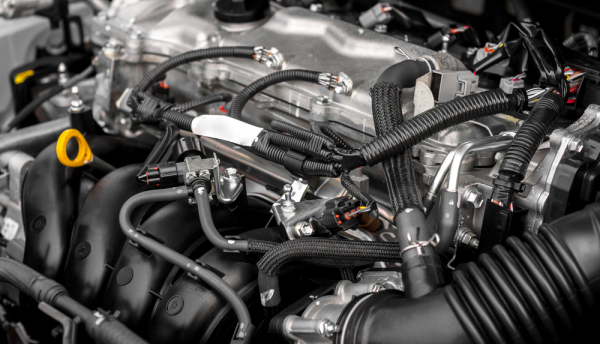
Production of turbochargers in China is set to grow dramatically over the next five years as the country’s light-vehicle market takes off. With market share of turbocharged engines steadily increasing, turbocharger suppliers are setting up localised facilities catering to both global and local OEMs in the region.
Although naturally aspirated engines will continue to dominate through 2021 in the passenger car market, turbocharged engines will maintain a steady increase over the next few years. IHS Automotive forecasts that market share of turbocharged engines in China will go from around 30% in 2015 to over 50% in 2019. This is currently being driven by global OEMs, including Volkswagen and General Motors, who have released turbocharged engines in China. BMW, Daimler-Benz, Ford, and PSA will also introduce turbocharged engines into the China market in the upcoming years. In November 2014, BorgWarner announced that it was supplying its advanced turbocharging technology for Volkswagen's four-cylinder gasoline engine for the Chinese market.
In addition, local OEMs, including Brilliance, BYD Auto, Changan, Chery, Dongfeng, FAW, Geely, Great Wall, and SAIC Motor, are on their way to developing turbocharging technology for their new gasoline engines. But it’s in diesel engines where turbochargers are most prevalent, with most in Greater China featuring turbocharging or variable turbocharging technology. For example, Geely’s EC7 was updated last year, replacing the model’s 1.5-litre and 1.8-litre naturally aspirated engines with new 1.3-litre turbocharged engines.
The growth is being driven by China's fuel economy targets, which are expected to tighten from 6.9 litres per 100 kilometres (km) currently to five litres per 100 km by 2020, lifting demand for turbochargers. Engine downsizing is a critical technology for meeting future fuel economy standards because it offers reduced friction and lower weight. Furthermore, it is critically important that the engine operates at a higher speed (RPM) and efficiency point for fuel economy and CO2 reduction. Smaller turbos will form the largest part of the turbocharger market. Through 2017, IHS Automotive forecasts the highest market growth for turbo- or supercharged engines globally will be in the 1.1L to 2.0L displacement range. Compared with 2011, global production of forced induction engines of this size is expected to almost double to 26 million units.
The increasing market share taken by turbocharged engines, coupled with China’s forecast growth in vehicle production, means that the market has huge growth potential for suppliers. BorgWarner estimates that the light vehicle turbocharger market in China will more than double from 4.2 million units in 2014 to 8.6 million units in 2019.
The major turbocharger suppliers – Honeywell, BorgWarner, Mitsubishi Heavy, IHI – are looking to capitalise as other big suppliers look to make a move into the sector. New players Bosch-MAHLE and Continental are together expected to take around a 6% global market share for turbochargers by 2017. Bosch MAHLE Turbo Systems (BMTS), a joint-venture between Robert Bosch and MAHLE, opened its first production plant in December and has already secured orders from its customers in the Chinese market.
BorgWarner’s growth strategy is built on new demand for turbochargers. It expects net new powertrain business worth USD2.9 billion for 2014 through 2016, up 26% from the previous three-year net new business. Out of the total new business, about 80% is anticipated from engine-related products such as turbochargers. The company’s plant in Ningbo, China produced its five millionth turbocharger for passenger cars and commercial vehicles last week.
In September, both Honeywell and Borgwarner opened plants in China to produce turbos. Honeywell opened a new turbocharger plant in Wuhan, China, allowing the company to triple its turbocharger production capacity in China, while BorgWarner’s second turbocharger plant is based in Taicang.








